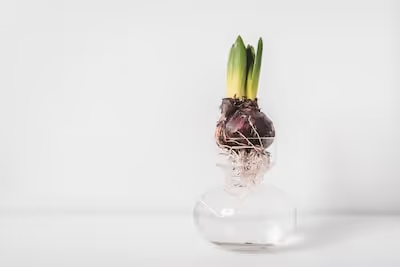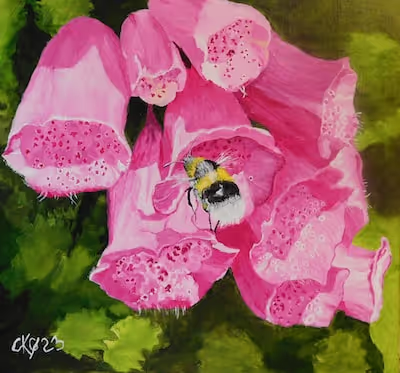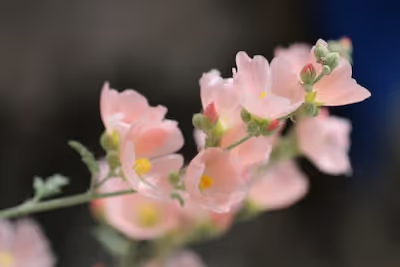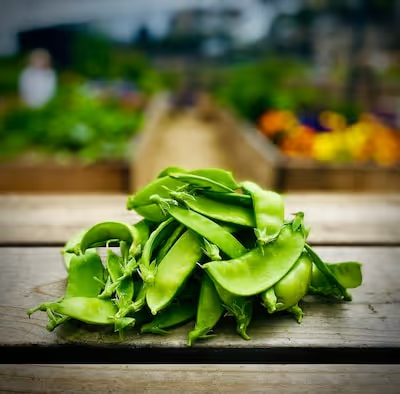Growing Valerian: From Seedlings to a Healthy Garden Harvest
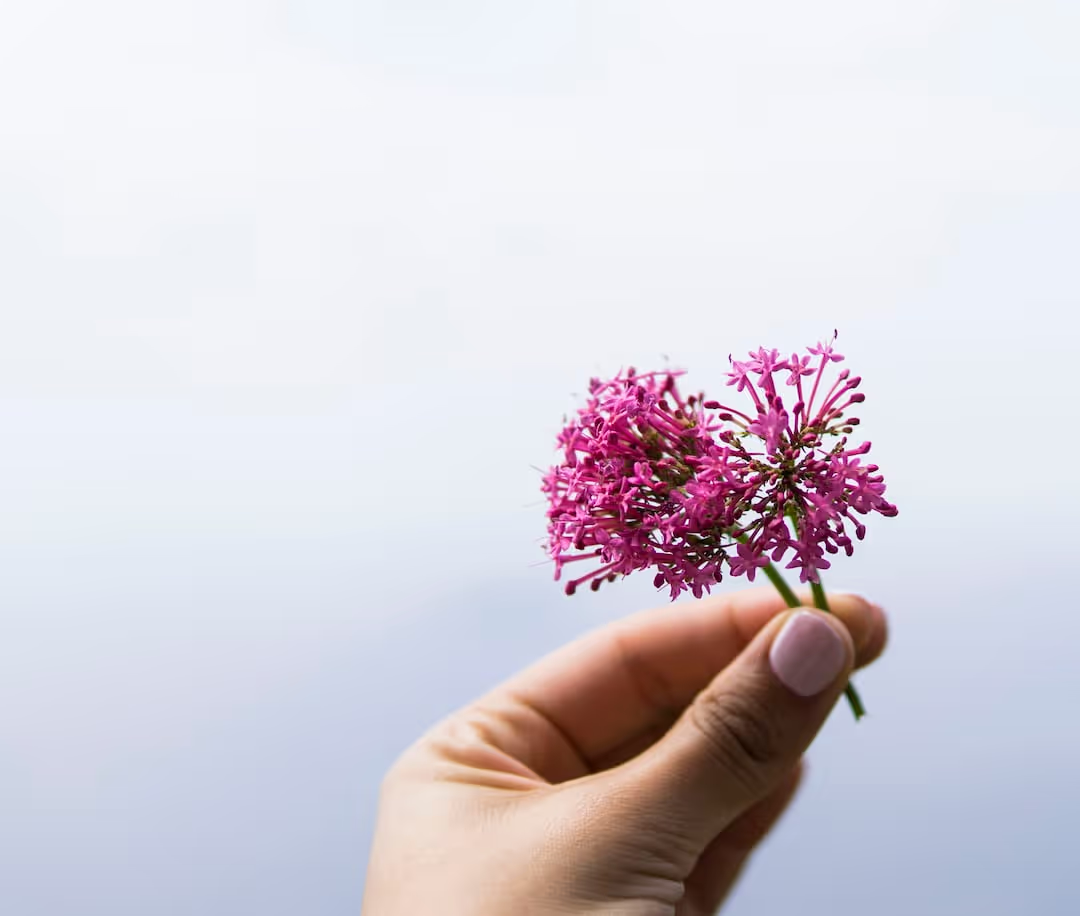
Growing Valerian
Growing Valerian from seed unlocks a perennial garden centerpiece prized for its calming roots and delicate blooms. Sow valerian seeds directly outdoors in spring, lightly pressing them into moist, fertile soil under partial sun. Thin seedlings once they're vibrant and established, and you'll soon harvest roots bursting with tranquil potency—follow along to ensure bounty and bliss.
Cheatsheet: Raise Vigorous Valerian for Homegrown Wellness
🌱 Starting Valerian from Seed
- Chill seeds in fridge 2–4 weeks (stratify) for best sprouting.
- Surface sow on moist seed mix; do not cover—needs light to germinate.
- Keep 65–70°F (18–21°C); expect sprouting in 2–4 weeks.
- Transplant outdoors after danger of frost passes.
🌤️ Best Growing Conditions
- Full sun to light shade.
- Rich, loamy, well-drained soil. pH 6.0–7.0 preferred.
- Space 18–24 in. (45–60 cm) apart.
- Mulch against weeds, conserve soil moisture.
💧 Water & Feed
- Keep evenly moist, avoid soggy roots.
- Compost or balanced organic fertilizer monthly.
⏳ Harvesting Roots & Flowers
- Roots: Dig in autumn of 2nd year. Slice and dry for tea or tincture.
- Flowers: Snip stems at peak bloom for fresh or dried use.
- Fresh root aroma: earthy, pungent (attracts cats).
🦠 Health, Nutrition, Self-Sufficiency
- Use dried roots for calming tea or tincture: shown to support sleep.
- Harvest supports home apothecary and resilience.
- Rich in essential oils (valerenic acid, natural sedative properties).
🧰 Tools and Products You'll Need
- Seed trays, cell packs, or small pots
- Sterile seed starting mix
- Labels and mist spray bottle
- Compost or general-purpose fertilizer
- Garden fork/spade (for root harvest)
- Drying rack or dehydrator
🌿 Fun Fact
- Valerian root has supported sleep for 2,000+ years. Yields may reach 3 lbs (1.3 kg) root per mature plant.
- Up to 95% germination with pre-chilled, fresh seed.
-
Growing Valerian: from seedlings to a healthy garden harvest
I grow Valeriana officinalis for its scented roots, billowing umbels, and the wild hum of hoverflies around it. It stands tall, 3 to 5 feet high (0.9 to 1.5 m), with a stubborn will to thrive in moist, rich soil.
Know the plant
Perennial, rhizomatous, and eager to reseed, valerian fills a bed fast if you let seed heads ripen. I learned to deadhead or I get a meadow where I wanted a patch.
It prefers moist, fertile loam at pH 6.0 to 7.5 and steady moisture. In cool regions it loves full sun, while in hot summers I give it afternoon shade.
Seed starting that actually works
Valerian seed is short-lived, so I buy fresh each year and store it cold. Refrigeration keeps germination steady and saves headaches in spring.
Chill, light, and timing
I cold stratify seed 2 to 4 weeks at 34 to 41 F (1 to 5 C). Then I sow at 65 to 70 F (18 to 21 C) and expect sprouts in 10 to 21 days.
Seeds need light to germinate, so I press them into the surface without burying. A humidity dome keeps the surface evenly damp, not soggy.
Pro move: dense flats, gentle pricking-out
I sow densely in 72-cell trays or open flats and prick-out once roots knit. Handling them young prevents the lanky, floppy stage that never quite recovers.
“Surface-sown seed, reliable after a short cold period, and quick germination in gentle warmth.” RHS plant profile, Royal Horticultural Society, 2023.
Transplanting and spacing
I harden seedlings for 7 to 10 days outdoors, then plant after the last hard frost. I give each plant 12 to 18 inches (30 to 45 cm) to breathe.
Deep watering at planting sets the crown level with the soil. Mulch right away to lock in moisture.
Soil prep that pays off
I mix 2 to 3 inches (5 to 7.5 cm) of finished compost into the top 8 inches (20 cm). If drainage lags, I add coarse sand or fine gravel until water percolates within a minute.
Overfeeding with nitrogen grows lush tops and bland roots. I side-dress with compost midseason and skip hot synthetic feeds.
Water, then water again
Valerian craves even moisture, about 1 inch (25 mm) per week, more in heat. In July I often water every other day in sandy soils.
Mulch with straw or shredded leaves 2 inches (5 cm) thick. Bare soil bakes plants and shrinks roots.
Light and climate
USDA zones 4 to 9 fit valerian well, with winter chill boosting vigor. In zones 8 to 9 I place it where afternoons cool and the hose reaches easily.
Wind topples tall stalks, so I tuck plants behind a mesh fence or stake at 3 feet (0.9 m). A single soft tie around the clump keeps the stand upright.
Containment and self-seeding
Valerian throws seed like confetti. I clip flower heads as they fade if I am growing for roots.
For pollinator fireworks, I let a few bloom and bag the rest. Volunteers are simple to pot up or pull young.
Growing Valerian in containers
I use at least a 5 to 7 gallon pot (19 to 26 L) with a moisture-holding mix of compost, loam, and bark. The crown sits slightly high to avoid rot.
Containers dry fast, so I water daily in heat. I feed monthly with a mild fish or seaweed tea at half strength.
Pests, diseases, and simple fixes
Slugs swipe seedlings; copper tape or nighttime hand-picking solves it. Aphids cluster on stems; a quick blast of water or insecticidal soap ends that party.
Powdery mildew shows in cramped beds, so I thin plants and water soil, not foliage. Waterlogged soils invite root rot, which is a one-way street, so I manage drainage first.
Root harvest, the whole point
I harvest in year two, autumn through early winter after dieback, when roots smell strong and earthy. Year one plants should build crowns without disturbance.
I lift with a digging fork, shake off clods, and slice rhizomes into thumb-thick chunks. Side roots hold plenty of aroma too, so I keep them.
Cleaning and drying for quality
I rinse roots in two changes of clean water, then pat dry. I cut into 0.25 inch (6 mm) slices for even drying.
Dry at 95 to 104 F (35 to 40 C) with steady airflow until pieces snap. Too hot and the volatile oil flashes off and the magic goes with it.
“Roots are dug in autumn of the second year; dry warm with active ventilation to preserve aroma and valerenic constituents.” American Herbal Pharmacopoeia, Valerian Root and Rhizome, 2013.
Post-harvest storage
I store bone-dry roots in amber glass, filled to the shoulder, with a dated label. Cool, dark shelves hold quality for 12 to 18 months.
If the jar fogs, I redry at low heat and try again. Moisture is the enemy that ruins flavor and chemistry.
Varieties and sourcing
Seed houses often list common valerian simply as V. officinalis. For uniform stands, I buy current-season lots and avoid mystery mixes or stale packets.
Japanese valerian (V. fauriei) also grows well but varies in height and scent. I keep it separate to track performance.
Companions that share its thirst
- Angelica, lovage, and meadowsweet for a tall, moisture-loving border.
- Skullcap and lemon balm for a calmer understory with living mulch.
- Catnip kept a few feet away, unless you like cats rolling in your beds.
Safety, legality, and local ecology
Garden heliotrope can escape cultivation in riparian zones. I deadhead religiously near waterways and compost spent blooms hot.
Some regions treat it as a managed weed, so I check state lists before planting. Washington State Noxious Weed Control Board flags it for spread risk in certain counties.
Buying guide: seeds, starts, and gear
- Seeds: request fresh, tested lots and a packed-on date. Ask the vendor about germination percentage and harvest year.
- Starts: look for stocky plants with multiple crowns and white, firm roots. Avoid potbound or floppy stems.
- Soil test kit: pH and organic matter checks pay off before you amend.
- Mulch: clean straw or shredded leaves to hold moisture and suppress weeds.
- Drying: mesh trays or a dehydrator with precise low heat control.
- Storage: amber glass with tight lids and labels that include date and bed location.
Alternatives and complements to Growing Valerian
- Lemon balm (Melissa officinalis): fast, forgiving, bright citrus scent, best fresh.
- Passionflower (Passiflora incarnata): vining, loves heat, architectural trellis plant.
- Hops (Humulus lupulus): vigorous climber, needs stout support and regular pruning.
- Skullcap (Scutellaria lateriflora): tidy footprint, thrives in damp edges.
Season-by-season playbook
- Late winter: stratify seed 2 to 4 weeks at 34 to 41 F (1 to 5 C).
- Early spring: surface-sow, bottom-water, and pot up once true leaves appear.
- Late spring: transplant after frost, mulch, and stake before stems stretch.
- Summer: water steady, deadhead or let a few heads ripen for pollinators.
- Autumn of year two: dig, wash, slice, dry low and slow, and jar tight.
What the science and institutions say
The EMA’s herbal monograph notes traditional use of valerian root preparations for mild nervous tension and sleep disturbances. Gardeners who grow for craft use usually time harvest to coincide with strongest aroma, which mirrors this traditional practice.
The RHS calls it a moisture-loving perennial for sun or partial shade with tall flower stalks attractive to insects. The American Herbal Pharmacopoeia details drying temperatures and collection in the second year to protect volatile constituents.
“Fast growth to 1.5 m, umbels adored by hoverflies and bees, and a preference for moisture-retentive soils.” Royal Horticultural Society, Plant Details, 2023.
Field notes from repeated grows
I get the fattest roots from plants kept evenly damp with a straw mulch and a compost side-dress in midsummer. Cutting flower stalks early concentrates energy underground and reduces woody rhizomes.
Cats go feral around drying roots, so I dry in a screened shed. In clay, raised beds are worth the lumber and the fewer headaches.
Quick answers for Growing Valerian
- Germination rate: best with fresh seed, often 60 to 80 percent after short chill.
- Time to transplant: 4 to 6 weeks from sowing, once roots hold the plug.
- Spacing: 12 to 18 inches (30 to 45 cm).
- Water: 1 inch per week (25 mm), more in heat and sand.
- Harvest window: autumn of year two, after top dieback.
- Drying temp: 95 to 104 F (35 to 40 C) with active airflow.
Credible sources
- Royal Horticultural Society, Valeriana officinalis plant profile, 2023.
- American Herbal Pharmacopoeia, Valerian Root and Rhizome Monograph, 2013.
- European Medicines Agency, Committee on Herbal Medicinal Products, Community Herbal Monograph on Valerianae radix, 2020.
- Washington State Noxious Weed Control Board, Garden Heliotrope listing, current guidance.
Valerian Growing FAQ: Expert Answers to Your Burning Questions
When Should I Start My Valerian Seeds Indoors?
Kickstart your valerian seeds indoors about 6-8 weeks before the final frost of spring. Give them a bed of moist, fertile seed-starting mix and maintain temperatures between 65°F and 70°F to coax germination.
How Deep Should I Plant Valerian Seeds?
Bury valerian seeds shallow—no deeper than ⅛-inch. They crave a gentle breath of soil, barely covering their delicate shells. Keep their bedding damp but never soggy to encourage lively sprouts.
What's the Ideal Soil and Sunlight for Growing Valerian?
Valerian loves loamy, rich soil that's organically charged and drains reliably. Aim for a sunny patch, though valerian accepts partial shade gracefully. Soil with a 6.0 to 7.0 pH hits the sweet spot.
How Much Space Does Valerian Require in the Garden?
Give valerian breathing room—space each plant approximately 12 to 24 inches apart. These plants grow tall and broad, and crowding them stifles airflow and risks fungal issues.
What's the Best Method for Watering Valerian Plants?
Water valerian with consistency rather than abundance. Keep the soil evenly moist but avoid drenching. Water deeply about once per week, more if summer heat turns fierce or rainfall feels scarce.
Should I Fertilize My Valerian Plants?
Feed valerian sparingly. A modest addition of compost in spring usually satisfies them for the season. If the plants appear sluggish, supplement occasionally with mild, balanced liquid fertilizer.
When And How Do I Harvest Valerian Roots?
Harvest valerian roots in early autumn of the second year, once foliage yellows and dies back. Gently dig around the roots, lift carefully, clean thoroughly, then dry them in an airy, shaded area for optimal potency and storage.
Can Valerian Be Grown In Containers?
Absolutely—valerian adapts well to container life, provided it gets a sufficiently deep pot (at least 12 inches deep). Select a container with reliable drainage and rich potting soil, and position it in full sun or partial shade.
Are There Any Pests or Diseases to Watch Out for With Valerian?
Valerian typically faces few foes, but occasionally aphids or powdery mildew may appear. Counteract these nuisances with organic solutions: a quick spray of neem oil or a homemade insecticidal soap usually does the trick.
Growing Valerian rewards patience. From the first green curl of a seedling to the dug roots and sweet-scented flowers, this herb brings a touch of wildness and a sense of calm to any plot. Give it rich soil, steady moisture, and a bit of space, and it’ll return the favor with resilient growth and potent roots by your second season. The real trick? Leave impatience at the door—valerian grows on its own terms. If you’re looking to pair valerian with other herbs, you might try growing marjoram or growing oregano for a patch that’s as useful as it is beautiful. In the end, growing valerian is about trusting the process, letting the garden work its quiet magic, and knowing the roots you pull from the earth are worth every slow week in between.
The Prepper's Guide to Valerian Cultivation and Use
Strategic Valerian Placement
- Defense planting: Position valerian near vegetable beds; attracts pollinators and repels ground pests naturally.
- Hidden locations: Grow valerian discreetly near fences and borders; tall foliage blends well, offering privacy and protection.
Essential Harvest and Storage Methods
- Harvest timing: Dig roots after first frost; potency peaks as foliage browns, optimizing medicinal efficacy.
- Root drying: Slice cleaned roots thinly; dry thoroughly in shaded, ventilated area until brittle. Store in airtight containers, cool and dark, to preserve potency for up to three years.
Medicinal Preparedness Applications
- Anxiety remedy: Keep dried roots for tea infusion; mild sedative effect aids sleep and reduces stress during challenging times.
- Pain relief compress: Grind dried roots finely; mix paste with warm water, apply externally to relieve muscle cramps and tension headaches.
- Emergency barter item: Valerian root's recognized medicinal value provides practical trade potential during shortages or disruptions.
Self-Sufficiency Benefits
- Propagation independence: Allow valerian to self-seed to expand crop naturally and sustain supply without external seed reliance.
- Soil improvement: Utilize valerian's deep roots to break compacted soils, enhancing drainage and fertility for adjacent staple crops.
Valerian Cultivation Quick Stats
- Optimal growth zones: Thrives reliably in USDA Zones 4–9.
- Medicinal root yield: Mature plant typically produces approximately 4–6 oz (115–170 grams) of dried root per harvest.
- Storage longevity: Properly dried valerian root remains medicinally effective up to 2–3 years.
Find out which plants will thrive in your garden!
Answer a few fun questions and get custom plant recommendations perfect for your space. Let’s grow something amazing together!

start your season
.avif)
